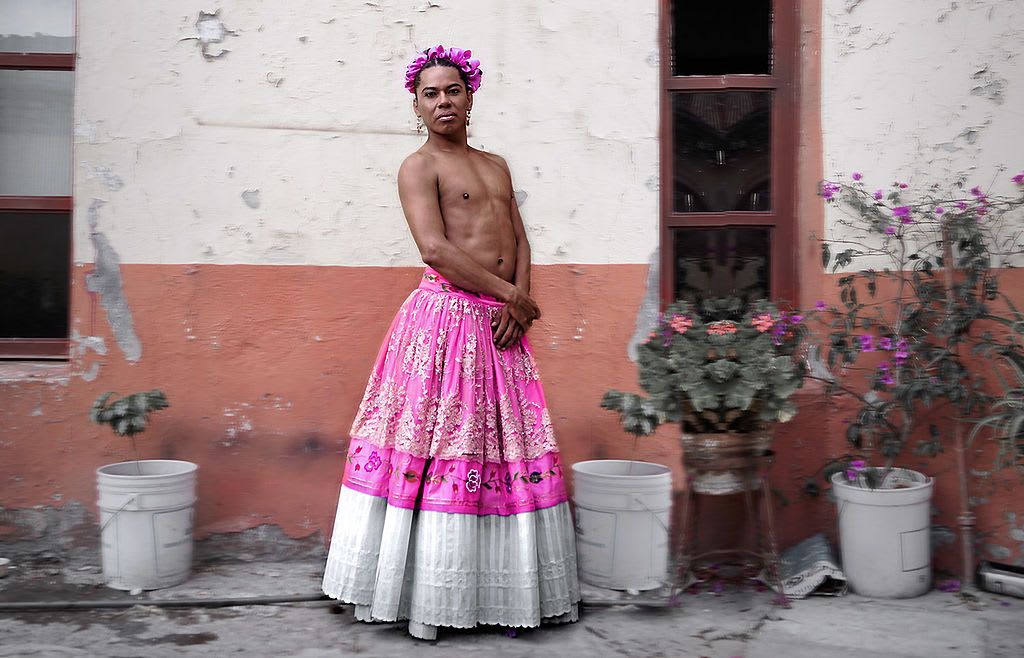For Muxes, Every Month Is Pride Month
Mexican males who dress as women in Oaxaca are socially welcomed.

In 1970, the month of June was named National Pride Month, a year after the famous Stonewall riots in Greenwich Village located in New York City. The riots, which spanned over three days, saw the New York gay community resisting police discrimination and public humiliation. The 1969 riots sparked the inception of what came to be known as the LGBTQ Rights Movement and are some of the most prominent occurrences in the history of the national gay community and the struggle for public recognition and visibility.
Initially, Pride month was intended to offer a political opportunity to demonstrate and demand equal rights for the gay community. Over the years, the month has adapted a more celebratory notion with elaborate parades and events. In a way, the latter aspect suggests a certain triumph for the LGBTQ community in that it has a timeframe allocated for self-affirmation.
However, the fight toward equality in the nation is far from over.
President Donald Trump recently rescinded protections set in place by the Obama administration that allowed transgender students to utilize restrooms that corresponded with their gender identity. The directive was an immense setback for both the nation’s LGBTQ community and transgender rights. Aside from being counterproductive for the queer community, the Trump administration’s decision also gave insight into the nation’s perception of the transgender demographic.
Transgender people are prone to face physical and sexual violence, harassment, and assault. Transgender people also encounter extraordinary levels of stress related to their home and work environment where they may find little to no acceptance.
The issue has perhaps shifted to the forefront as one of the most relevant and troubling issues faced by the LGBTQ community. As resolutions and advances are sought out here in the U.S., some transgender people in other parts of the world can feel more at ease.
In Oaxaca, one of the southernmost states in Mexico, the case is entirely the opposite.
Derived from the Spanish word ‘mujer,’ which means woman, muxes are boys and men who identify themselves as females. Like most transgender people, muxes dress in women’s clothing and apply make-up on themselves. They speak effeminately. But they also take on social roles traditionally given to genetically-born females. Muxes learn to sow, cook, and do chores as do little girls. They braid hair and embroider dresses. When they are old enough, the Muxes learn to craft artisan products to sell at the market. Some work as stylists and florists.
In other words, they are socially accepted.
Muxes tend to stay at home with their parents while their siblings marry and leave the house. A muxe is expected to take care of her parents as they age and get sick. For this reason, many families see their muxe as a blessing.
An article published in The New York Times states that anthropologists believe muxes are socially accepted because of Aztec and Mayan priests who would cross-dress and considered both male and female. When the Spaniards took over Mexico in the 1500s, they forcefully imposed Catholicism amongst the indigenous communities and thus did away with the gender phenomenon.
In the town of Juchitan, the people host a three-day festival honoring the muxe community. The festival, known as ‘Vela de las Intrepidas’—or Vigil of the Intrepids—attracts both queer and straight people. There is food, beer, shows, and dancing. On the final night, a muxe is selected the queen of the festival and crowned by the mayor. The festival has been occurring since the 1970s.
Juchitan, Oaxaca is seen as a haven by the transgender community of Mexico. Many relocate there, seeking a more open and accepting life without worrying which restroom to use.
Here in the United States, crime driven by transphobia continues to rise. In 2018, the Human Rights Campaign tracked at least 26 incidents where transgender people were killed. In 2019, the HRC has already tracked at least seven fatal incidents involving violence against transgender people. The HRC also reported that 90 percent of transgender people reported experiencing harassment either at the workplace or at home.
With these incidents, reports, and Trump’s directive, the future of the domestic transgender community seems as uncertain and gloomy as ever.
In Oaxaca, muxes can apply their make-up, put on a dress, and walk to a restaurant for dinner during any month of the year.
About the Creator
Jose Soto
I am a writer and journalist born and raised in the El Paso, Texas and the Ciudad Juárez, Chihuahua, México, region. I write stories, blogs, essays, and prose that help myself and readers discover what it means to be human.







Comments
There are no comments for this story
Be the first to respond and start the conversation.